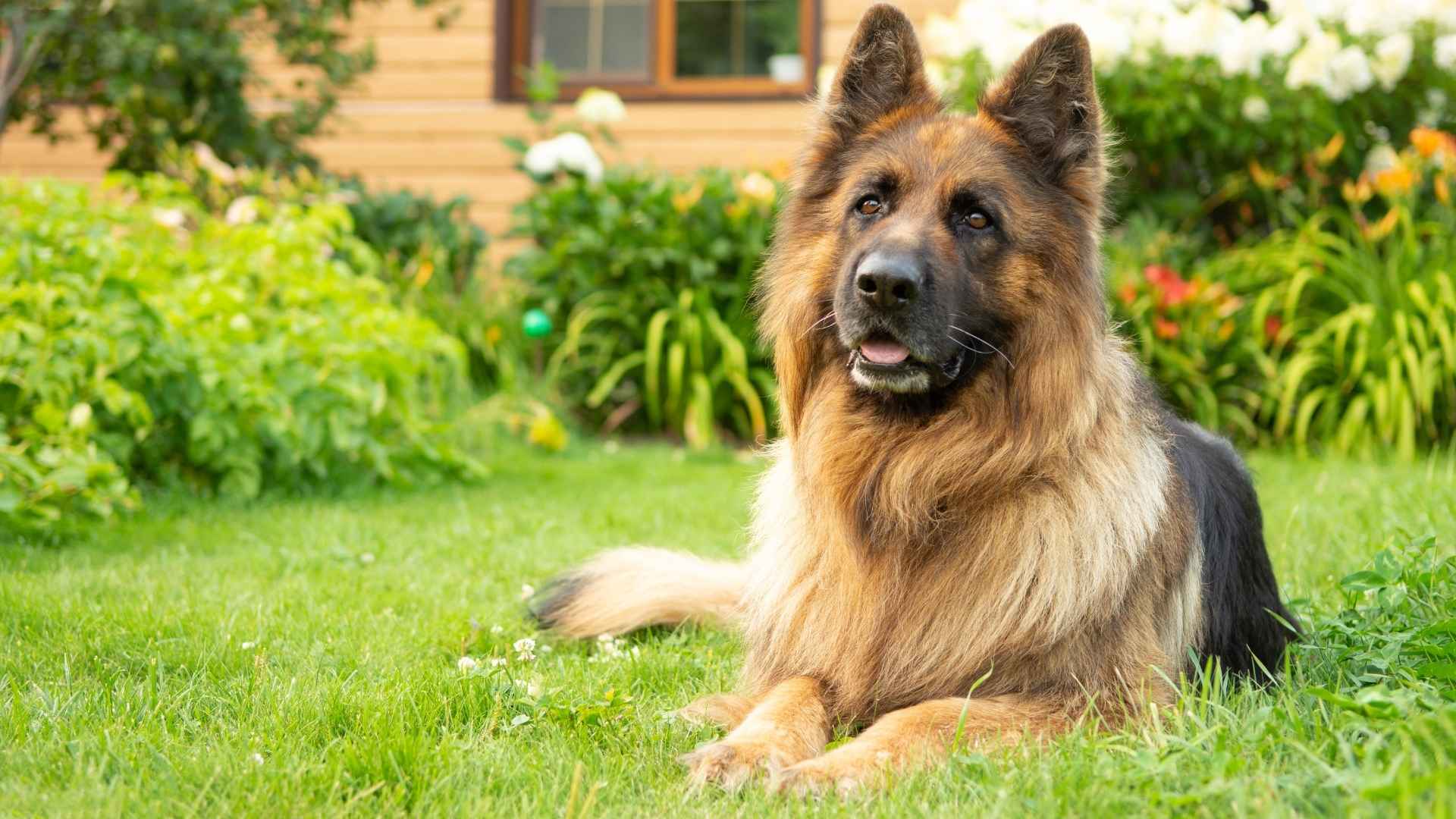Are you an outdoor enthusiast looking for a loyal canine companion who thrives in the open air? Certain dog breeds are naturally suited to outdoor living, whether you live in a colder climate or have a spacious backyard. These dogs aren’t just tolerant of the elements—they thrive in them!
Some dog breeds that can live outside are built with thick coats and a strong, independent nature that make them perfect for year-round outdoor adventures. Others are bred to work in harsh conditions, from herding livestock to pulling heavy loads across rugged terrains.
If you’re searching for a furry friend who loves to explore, run, and play in the great outdoors, you’re in the right place. This guide will introduce you to 7 exceptional breeds that can easily live outside, bringing unique qualities and energy to your outdoor lifestyle.
Dog Breeds that Can Live Outside
1. Siberian Husky

The Siberian Husky, a striking dog breed known for its resilience, was originally bred by the Chukchi people in Siberia to endure harsh winters and pull sleds over long distances. These dogs have an impressive double-layer coat that insulates against cold climates. Their thick fur, erect ears, and bushy tails are signature traits that make them perfectly suited for outdoor living in freezing temperatures.
One of the most fascinating aspects of Siberian Huskies is their incredible stamina. These tan pups were bred to travel long distances, often up to 100 miles daily. Huskies require daily exercise and mental stimulation, as they are high-energy dogs that enjoy running and hiking. Without proper engagement, they may become bored and exhibit undesirable behaviors, like digging or escaping from their yards.
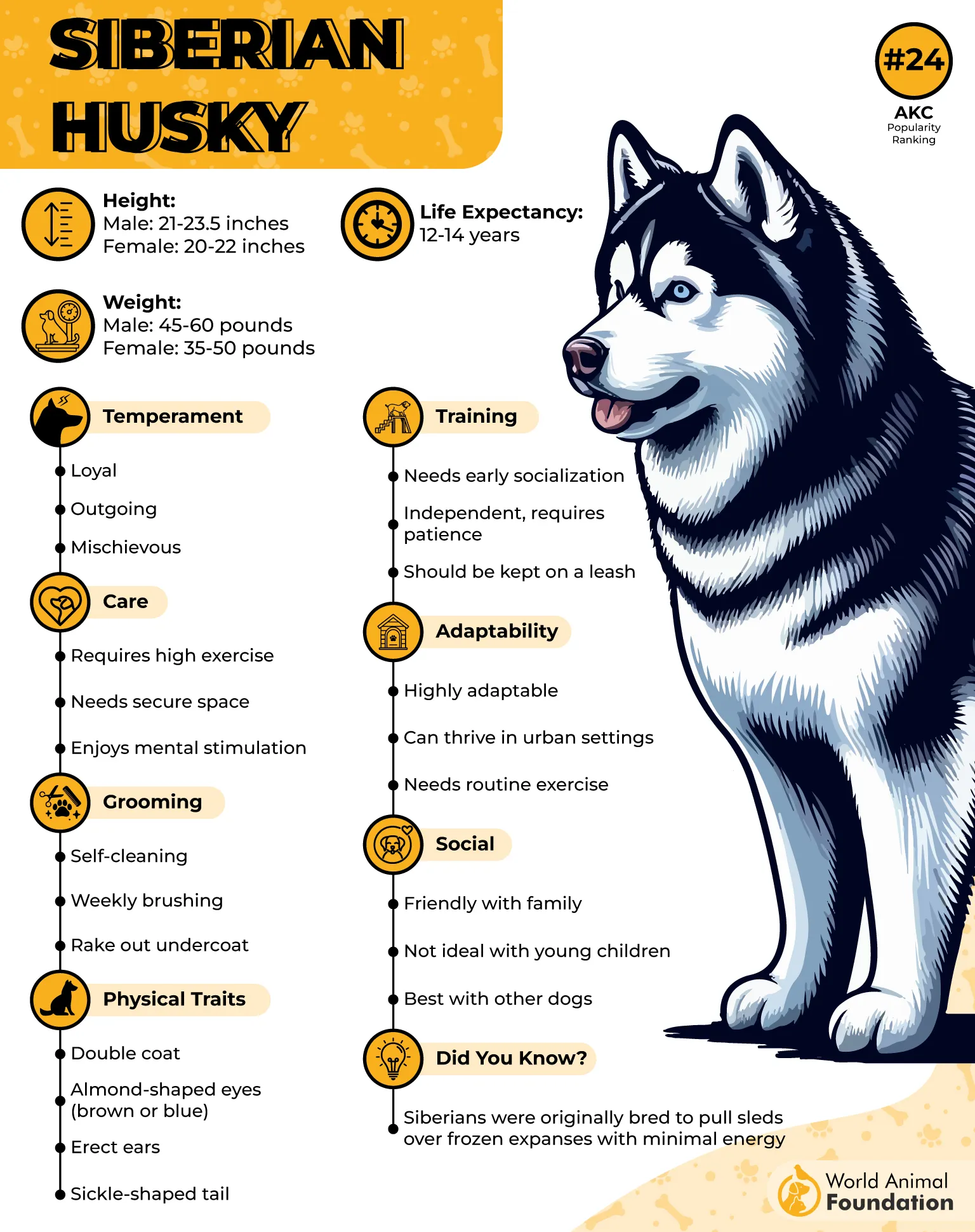
Their wolf-like appearance is another captivating feature. Siberian Huskies typically have striking blue eyes, although some can have heterochromia, where each eye is a different color. This breed is also known for being highly social and friendly, although they can sometimes be independent. They enjoy the company of other dogs and people, making them great for active families with plenty of outdoor space.
In terms of size, a typical Siberian Husky stands around 20 to 24 inches at the shoulder and weighs between 35 to 60 pounds. Despite their size, they are known for being agile and able to maneuver through deep snow and challenging terrain. Huskies are also relatively healthy, with a life expectancy of around 12 to 15 years.
Siberian Huskies are escape artists. Due to their intelligence and curiosity, they can often find ways to escape from fenced yards. This is why it’s essential to have a secure fence, preferably one at least six feet tall and reinforced to prevent escapes.

2. Alaskan Malamute

The Alaskan Malamute, a powerful and majestic breed, was bred to haul heavy freight across Arctic terrains. Their massive frame and dense, double-layer coat make them ideal companions for those who want a dog suited for colder climates. Alaskan Malamutes have a thick undercoat and a top layer of guard hairs that help them handle extreme temperatures, making them perfect for outdoor living in winter.
Known for their strength, these dogs can carry loads up to 1,000 pounds, showcasing their remarkable endurance and muscular build. They stand between 23 to 27 inches tall at the shoulder and weigh anywhere from 75 to 100 pounds, with males generally larger. Alaskan Malamutes were bred to work in teams, and they can pull sleds for miles on end, often covering long distances with ease.

While Alaskan Malamutes are friendly and affectionate, they have a strong independent streak. They enjoy being outdoors and need daily exercise to stay healthy and happy. These dogs are highly intelligent but can also be stubborn, so early training and socialization are crucial. They thrive in environments where they can run and explore, making them a great choice for individuals who lead an active lifestyle.
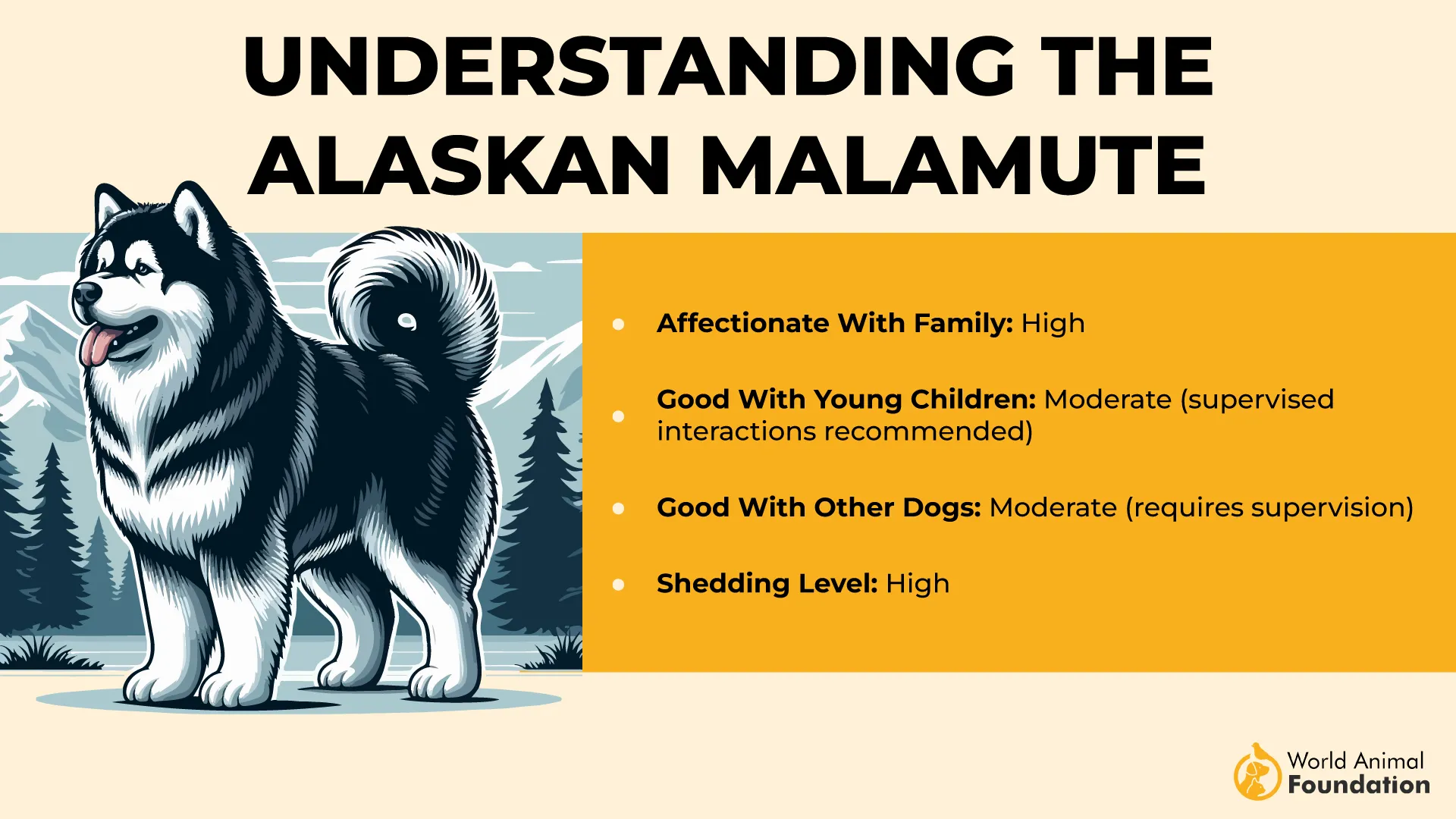
Fun Fact: Alaskan Malamutes are often confused with Siberian Huskies due to their similar appearance, but Malamutes are larger and stronger. While Huskies were bred for speed, Malamutes were bred for endurance and strength, making them ideal for heavy-duty work in cold regions.
Their life expectancy typically ranges from 10 to 14 years. They are relatively low-maintenance when it comes to grooming, though their thick fur does require regular brushing to prevent matting, especially during shedding seasons.
3. Saint Bernard
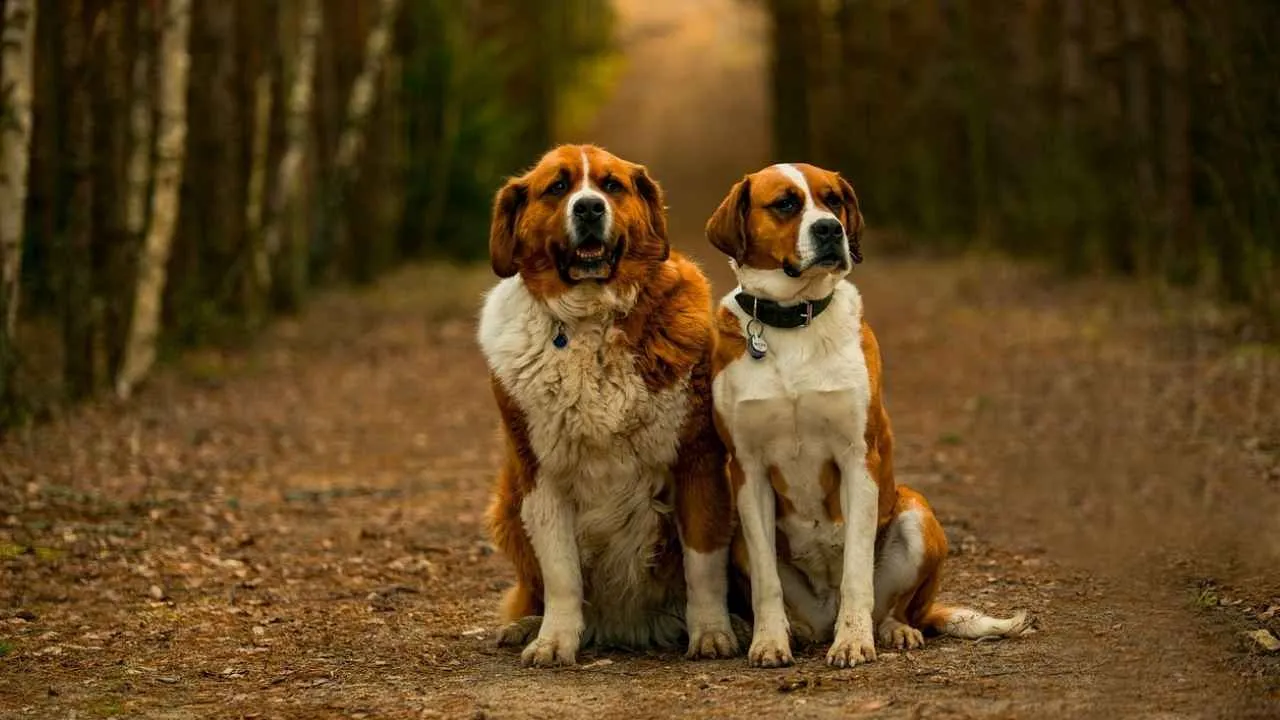
Known as one of the largest dog breeds, the Saint Bernard is a gentle giant with a rich history of working in the Swiss Alps. These dogs were originally bred to rescue travelers trapped in snowstorms, showcasing their ability to navigate harsh, cold climates. Their thick, water-resistant coats protect against the cold, and their large size makes them capable of enduring extreme temperatures for long periods.
Saint Bernards stand between 25 to 30 inches tall at the shoulder and can weigh anywhere from 120 to 180 pounds, with males being larger. Their powerful build allows them to carry out rescue missions in snowy, rugged terrains. Despite their size, they are calm and affectionate, making them excellent family dogs. They are especially known for their gentle and patient temperament, starkly contrasting their imposing appearance.

These dogs require moderate exercise and enjoy outdoor activities like hiking and walking. Due to their size, it’s important not to overexert them, especially in hot weather, as they can be prone to heat exhaustion. Saint Bernards are relatively low-energy dogs but thrive in large, open spaces, which makes them perfect for homes with large yards or rural properties.
Fun Fact: Saint Bernards are often depicted with a small barrel of brandy around their necks in popular culture. While this image is not historically accurate, it has become a symbol of their role in mountain rescue missions, where they have helped save many lives.
Saint Bernards typically live between 8 to 10 years. They are prone to certain health issues, such as hip dysplasia and heart problems, which potential owners should be aware of before bringing one into their home.
4. Finnish Lapphund
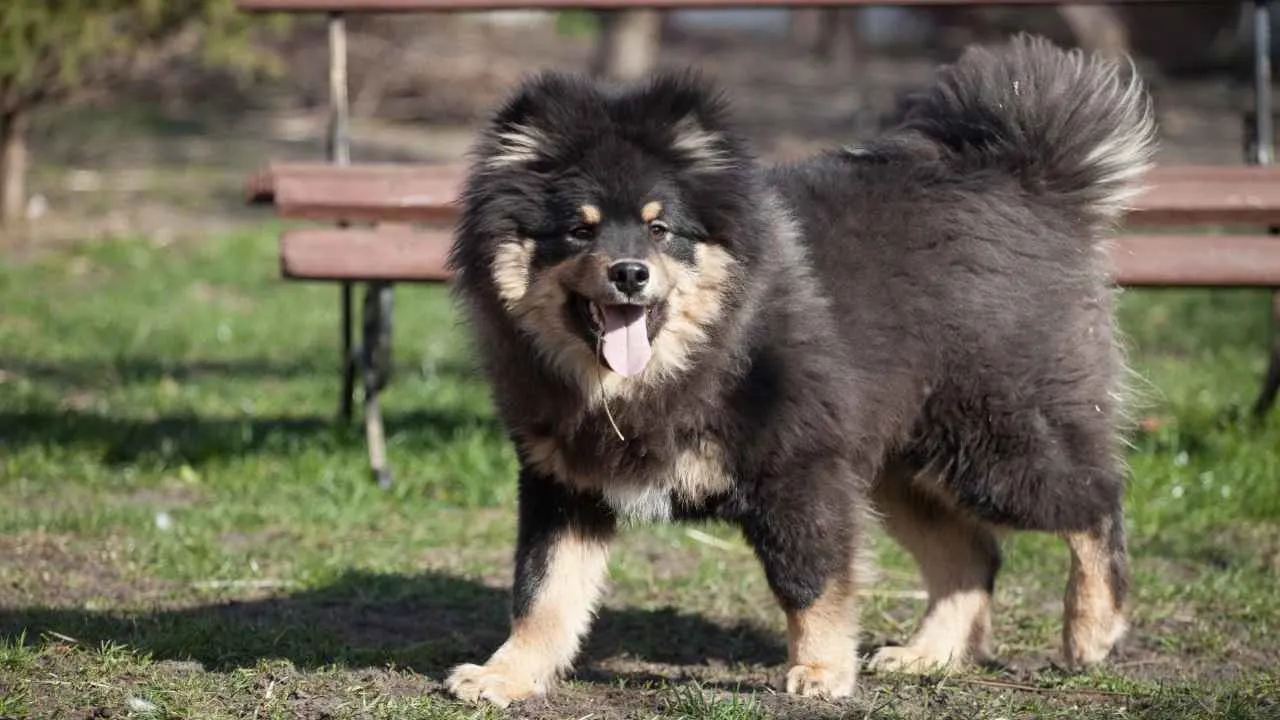
The Finnish Lapphund, a breed native to the Arctic regions of Finland, was primarily used for herding reindeer in freezing temperatures. Their thick, double-layer coat is designed to protect them from snow and cold winds. The breed is known for being alert, intelligent, and highly trainable, making them an excellent companion for outdoor activities in chilly environments.
Standing between 17 to 21 inches at the shoulder and weighing 33 to 53 pounds, Finnish Lapphunds are medium-sized dogs with a sturdy, compact build, says Purina. Their beautiful coats come in a variety of colors, ranging from black and tan to sable, and they have a bushy tail that curls over their back. Finnish Lapphunds are known for being social, good with children, and excellent with other animals, making them a great fit for families in colder climates.
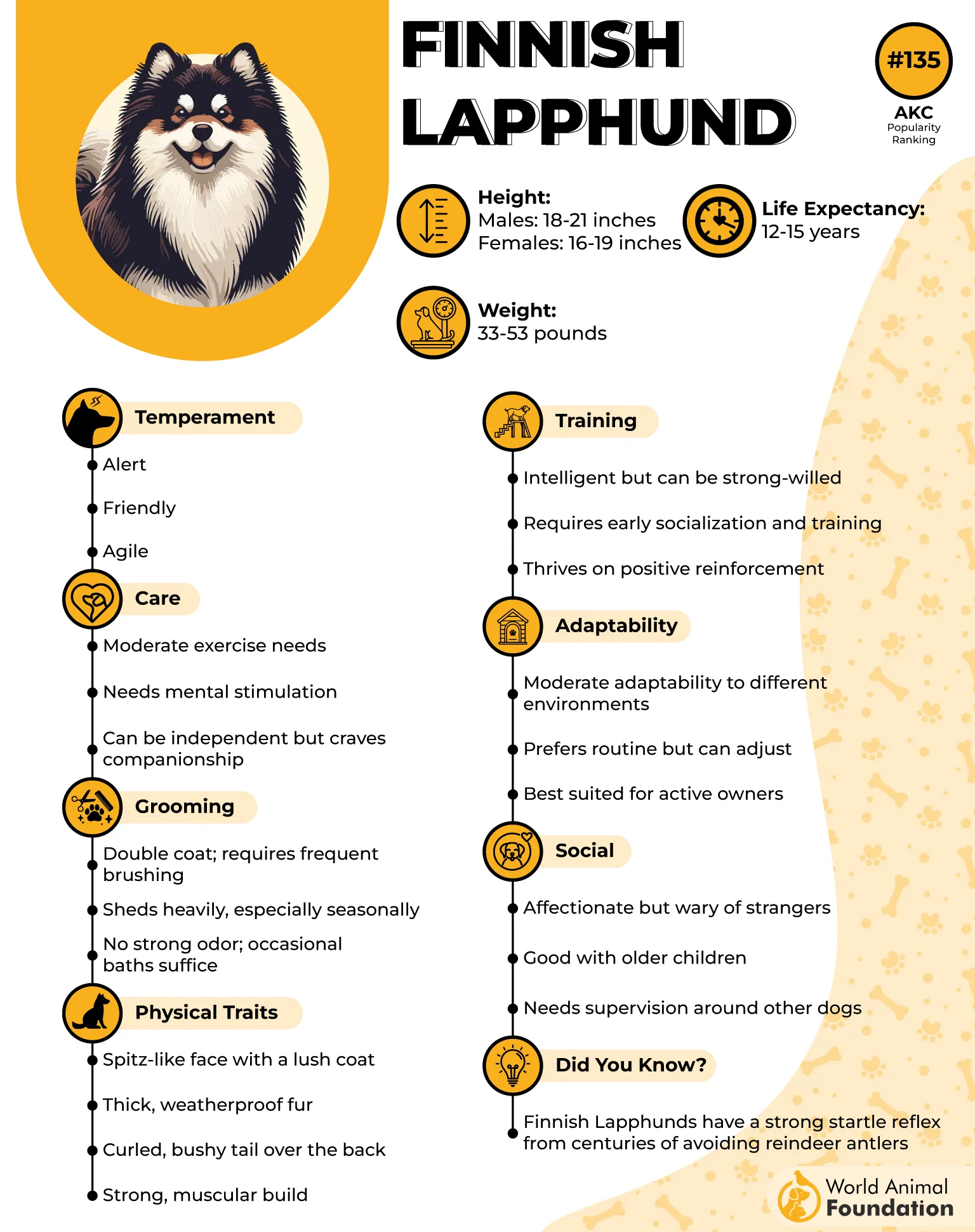
These dogs have a high energy level and enjoy participating in activities such as hiking, agility, and herding. They also thrive on mental stimulation, so puzzle games and training sessions are essential to keep them happy and engaged. Finnish Lapphunds are friendly and loyal, but they can be reserved with strangers.
Finnish Lapphunds are known for their excellent sense of smell, which was vital when they were used for herding and guarding reindeer. They could track reindeer through the snow, helping their owners in harsh conditions.
The Finnish Lapphund’s life expectancy is typically between 12 to 14 years. Grooming is essential to maintain their coat, especially during shedding seasons when they lose a significant amount of fur.
5. Norwegian Elkhound
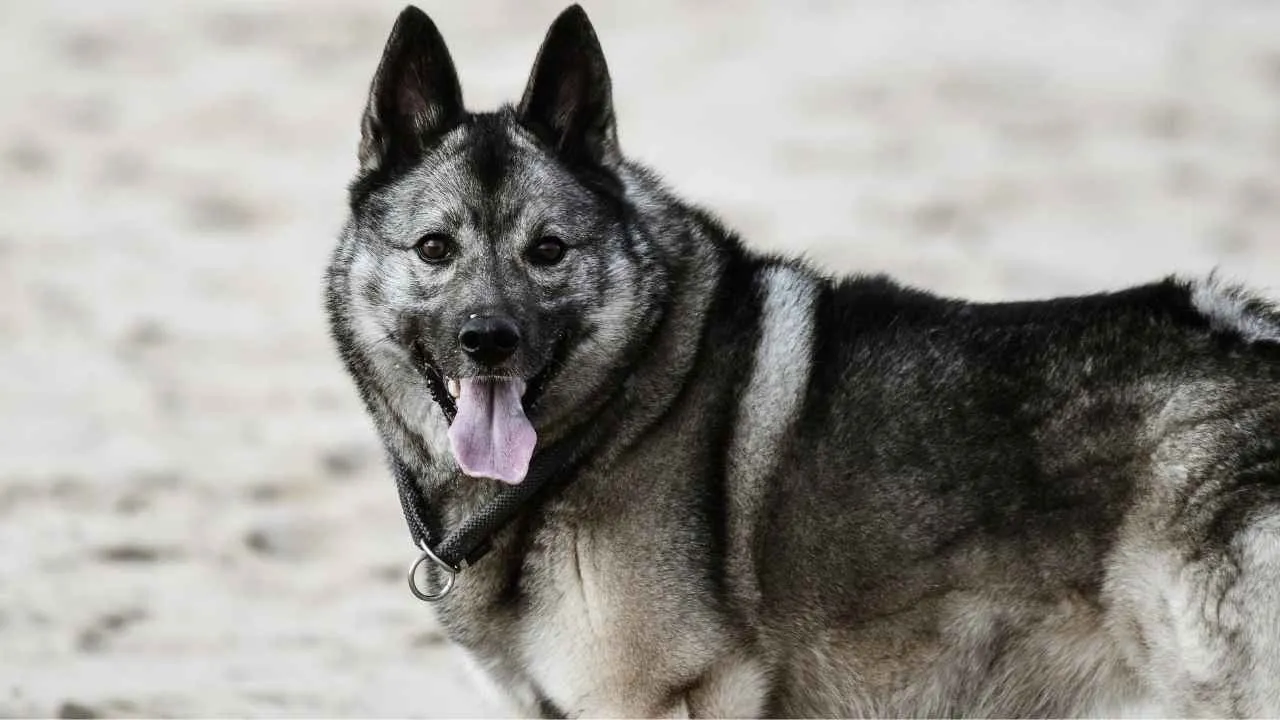
According to Britannica, the Norwegian Elkhound, a breed deeply rooted in Viking history, was originally used for hunting moose in Norway’s frigid forests. Their dense, weather-resistant coat protects them from the cold, and their strong, compact build makes them adept at navigating rough terrain. Norwegian Elkhounds are known for their excellent scenting abilities, which made them valuable companions for hunters in the wild.
These dogs are medium-sized, standing 19 to 20 inches at the shoulder and weighing around 40 to 60 pounds. With their curled tails, pointed ears, and silver-gray coats, they have an instantly recognizable, distinctive appearance. They are highly independent and have a strong prey drive, so early socialization is key to ensuring they interact well with other animals and people.

Norwegian Elkhounds are intelligent, independent, and loyal. They require regular exercise and mental stimulation to stay happy. They excel in activities like hiking, tracking, and even agility training, but they can be aloof with strangers. They are known for being great with families, especially if they are provided with plenty of opportunities for outdoor activities.
The Vikings considered Norwegian Elkhounds sacred and often used in battle as protectors. Their keen senses and fearless nature made them excellent companions for warriors.
These dogs typically live between 12 to 15 years. They require moderate grooming to maintain their thick coat, particularly during shedding seasons, when they shed profusely.
6. Irish Wolfhound
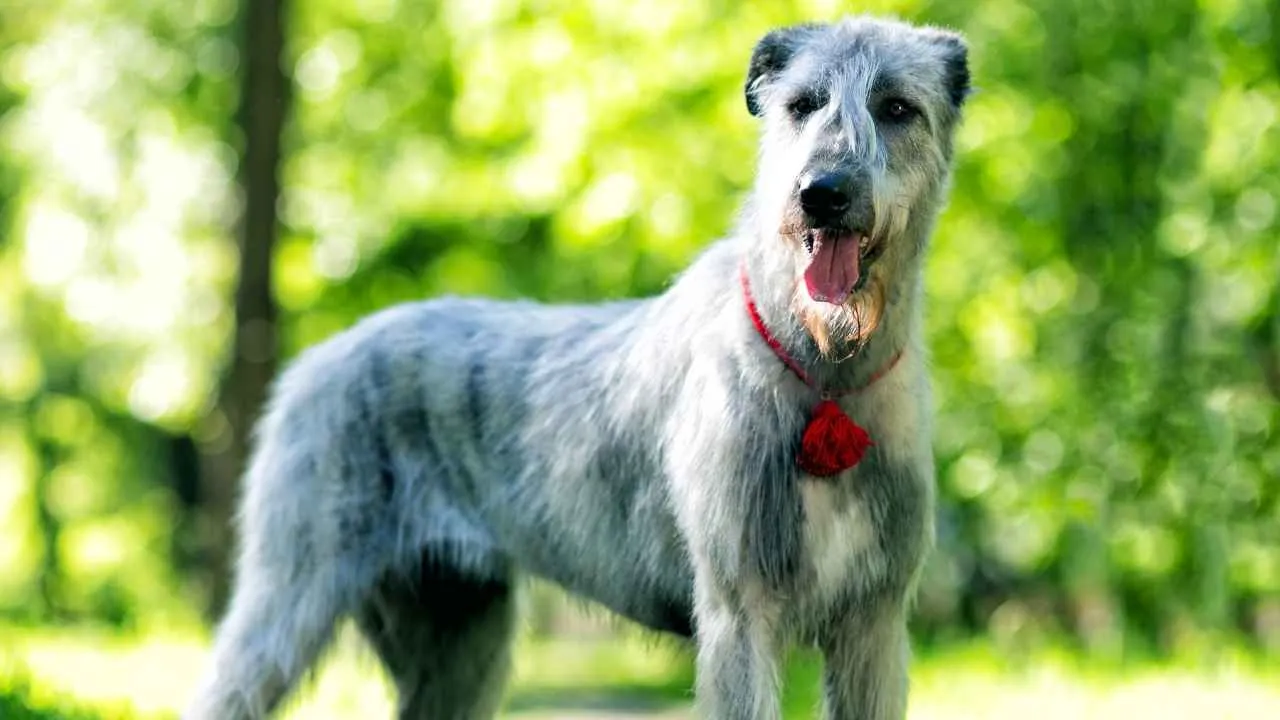
According to the AKC, the Irish Wolfhound is one of the tallest dog breeds in the world, with males standing at least 32 inches tall at the shoulder and weighing between 115 and 180 pounds. Bred for hunting large game like wolves and deer, these pups are known for their stamina and ability to endure tough outdoor conditions. Despite their imposing size, Irish Wolfhounds are gentle giants, often described as affectionate and friendly.
The breed has a wiry, weather-resistant coat that helps protect them from cold, wet conditions. They are well-suited for outdoor environments, especially in temperate climates where they can get plenty of exercise. Irish Wolfhounds are calm and patient, making them excellent family pets, but they require daily walks and occasional runs to keep them healthy.
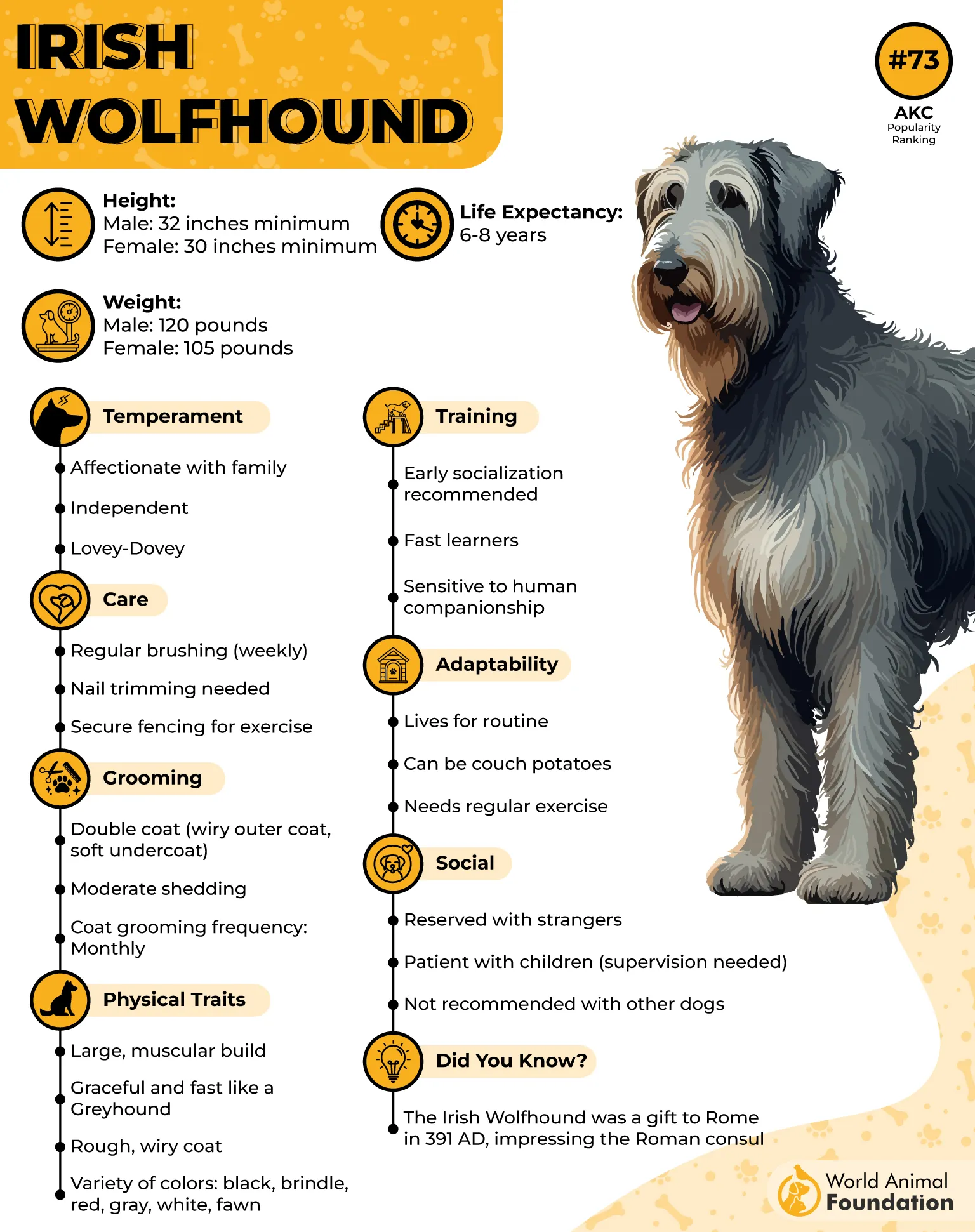
These dogs are known for their hunting instincts, and while they may be calm indoors, they remain alert and focused when outside. They are particularly known for their ability to navigate rugged terrains and are often used as companions for outdoor adventurers and hunters.
Irish Wolfhounds are famous for their friendly personality, despite their fierce reputation as hunters. They often form close bonds with their families and are known to be gentle with children and other pets.
With an average lifespan of 6 to 8 years, Irish Wolfhounds have a relatively short lifespan compared to smaller breeds. They may have health issues, such as heart disease and bloat, so potential owners should be prepared for these challenges.
7. Greater Swiss Mountain Dog
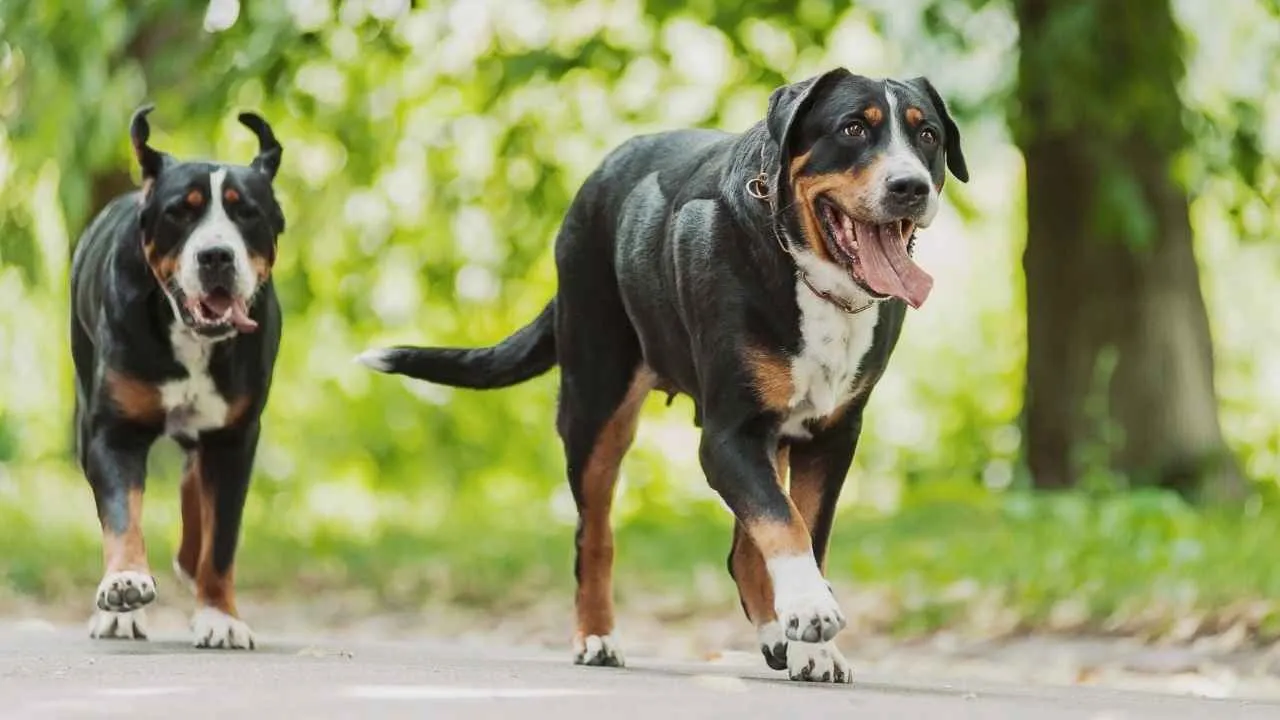
The Greater Swiss Mountain Dog is a versatile and hardworking breed that was originally used for herding cattle and pulling carts in the Swiss Alps. Their large, muscular build and thick coat make them well-suited for outdoor living in cold, mountainous environments. With broad chests, sturdy legs, and a thick undercoat, they are built to withstand the elements and perform hard labor in harsh conditions.
These dogs typically stand 23 to 28 inches tall at the shoulder and weigh between 85 and 140 pounds, making them one of the larger working breeds. They have a striking black, white, and rust tri-color coat, which is easily recognizable. Greater Swiss Mountain Dogs are gentle and affectionate despite their size, making them excellent family pets.
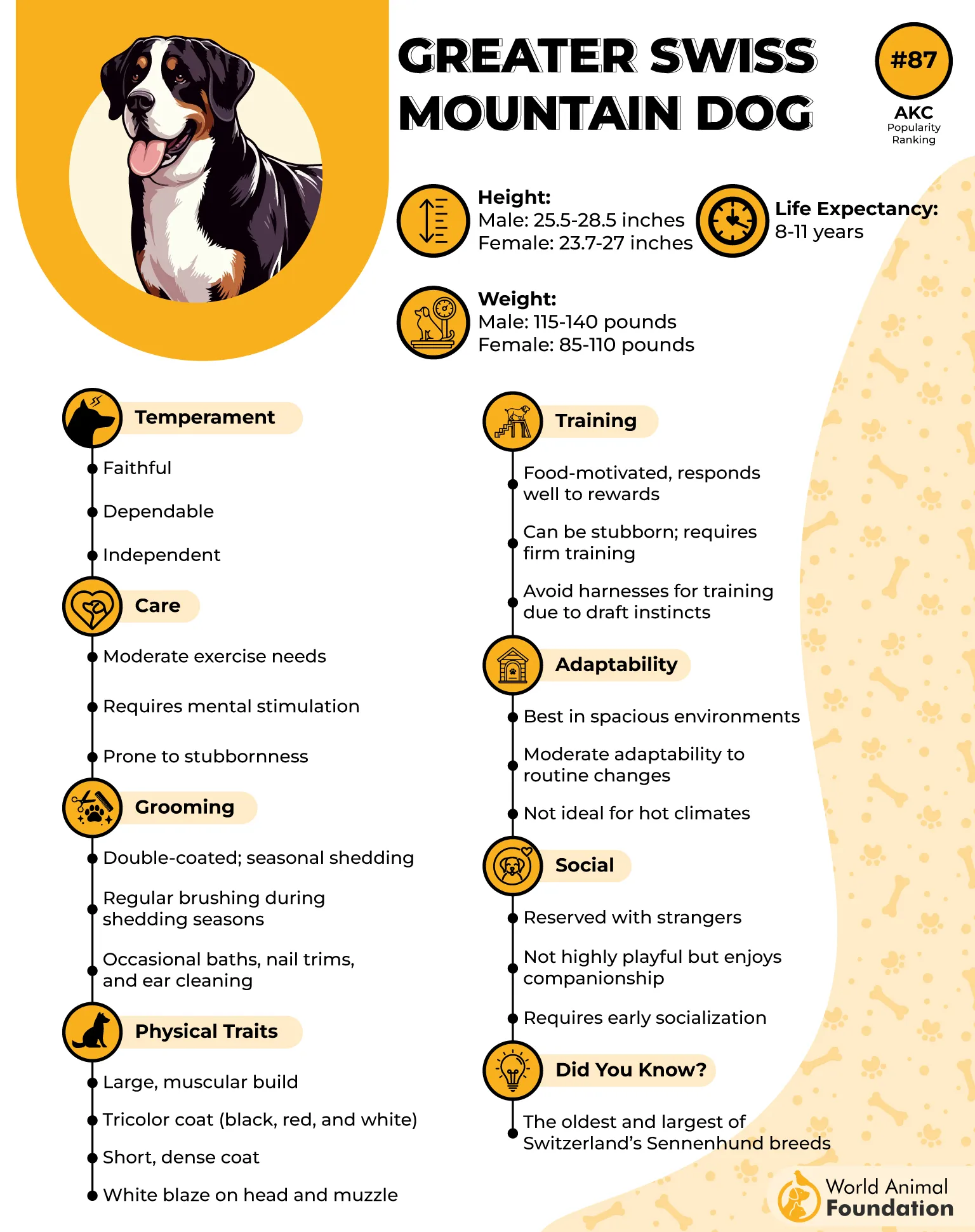
They thrive in active households that provide them with regular exercise and mental stimulation. These dogs are particularly suited for families with large yards or rural settings where they can run and play. Greater Swiss Mountain Dogs are also known for their protective instincts, making them excellent guard dogs for property and livestock.
Greater Swiss Mountain Dogs are known to be playful and affectionate with children despite their large size. They often form strong bonds with their family members and are eager to participate in hiking, running, and even pulling carts.
Greater Swiss Mountain Dogs are relatively healthy, though they can be prone to joint issues such as hip dysplasia. Regular exercise and a healthy diet are crucial to maintaining their health.
Conclusion
When considering a dog for outdoor living, choosing the right breed is essential for ensuring your dog’s well-being and enjoyment. Some outdoor dog breeds are known for their thick fur and cold-weather resilience, making them perfect companions for snow-covered terrains.
Similarly, some larger dogs like the thrive in harsh weather, their robust builds and protective instincts allowing them to handle extended periods outdoors.
However, it’s important to remember that not all breeds are suited for outdoor adventures. Breeds like the Labrador Retriever and German Shepherd may enjoy time outdoors, but are best kept in a safe zone with adequate shelter, especially during extreme temperatures.
Even dogs with short coats, such as the Blue Heeler (Australian Cattle Dog), require extra care in harsh conditions to remain comfortable and protected from the elements. On the other hand, breeds like the Great Pyrenees, with their thick, double coats, are naturally suited for colder climates and can thrive in outdoor environments as long as they have access to shelter when needed.
Ultimately, the best outdoor dog breeds for your lifestyle depend on your environment, activity levels, and the time you can dedicate to ensuring they have the proper shelter and exercise.


